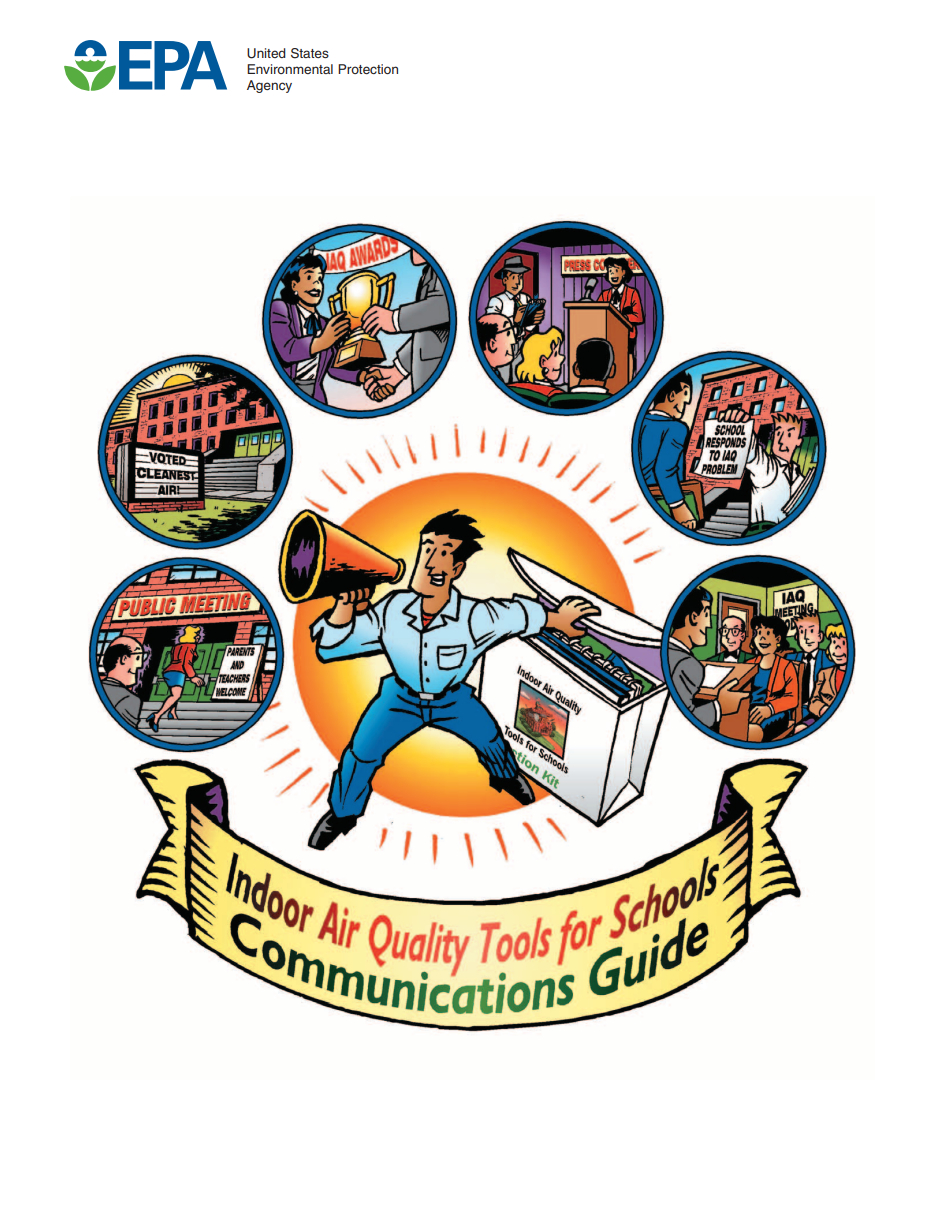Indoor Air Quality
Communities across the United States are facing the impacts of climate change, including severe health consequences from disasters like heat waves and wildfires. The factsheets below can help guide important school partners on how to make schools safer during these increasingly frequent and more severe climate change impacts.
The latest guidance from the Centers for Disease Control and Prevention (CDC) recommends improving ventilation (air flow, filtration, and treatment) to help protect building occupants from respiratory infections. Making ventilation system upgrades or improvements in your building can increase the delivery of clean air and reduce potential contaminants in indoor spaces. This can help reduce the number of viral particles in the air.
ASHRAE Standard 241-Control of Infectious Aerosols establishes minimum requirements aimed at reducing the risk of disease transmission through exposure to infectious aerosols in buildings. It sets the amount of equivalent clean airflow (ECA) for different building and space types when operating under “infection risk management mode” (IRMM). The standard also sets requirements covering air system design, installation, operation, and maintenance.
You can preview ASHRAE Standard 241-2023 using this link.
EPA Indoor Air Quality (IAQ) Tools for Schools provides guidance and resources to help schools develop an effective IAQ management program. It provides technical solutions to common IAQ problems in schools. The Framework describes actions and strategies that schools can take, and also case studies for reference.
This page contains links to resources and guidance from federal agencies about indoor air considerations for schools during COVID-19, as well as IAQ Tools for Schools resources to help create, maintain, and improve healthy learning environments beyond the pandemic.
A guidebook by USEPA that recommends ways to manage energy efficiency upgrades and indoor air quality (IAQ) in schools. It encourages integrating energy efficiency and IAQ protection goals so that schools can achieve strong results in both areas. Schools can use this guide to improve occupant health during energy efficiency upgrades and building renovations.
The Communication Guide helps schools to increase awareness of indoor air quality (IAQ( issues among students, parents, staff, and the community. It describes how schools can highlight their progress made toward a healthier indoor environment. It provides examples of how good communication can help schools gain the support they need from key stakeholders to improve IAQ in their buildings.
The Collaborative for High Performance Schools (CHPS) outlines operation strategies, and design strategies for renovations and new buildings, to improve ventilation, filtration, and indoor air quality. The document also describes funding opportunities for schools.
The IAQ Fact Sheet Series is designed by USGBC Center for Green Schools to help people without a technical background understand details about indoor air quality (IAQ) so that they can make important decisions for their schools. Fact sheets on ventilation, HVAC filtration, in-room air cleaners, germicidal UV (GUV, or UVGI), electronic air cleaners, and disinfectants are available for download.
This EPA resources cover a wide range of topics related to using sensors to measure outdoor and indoor air quality. It provides practical information on how to understand sensor data readings, guidance on how to site and install sensors, and how to evaluate sensor performance.
USEPA has a series of webinars on the principles and best practices for maintaining healthy learning environments with a focus on reducing risks for airborne infectious disease spread.







